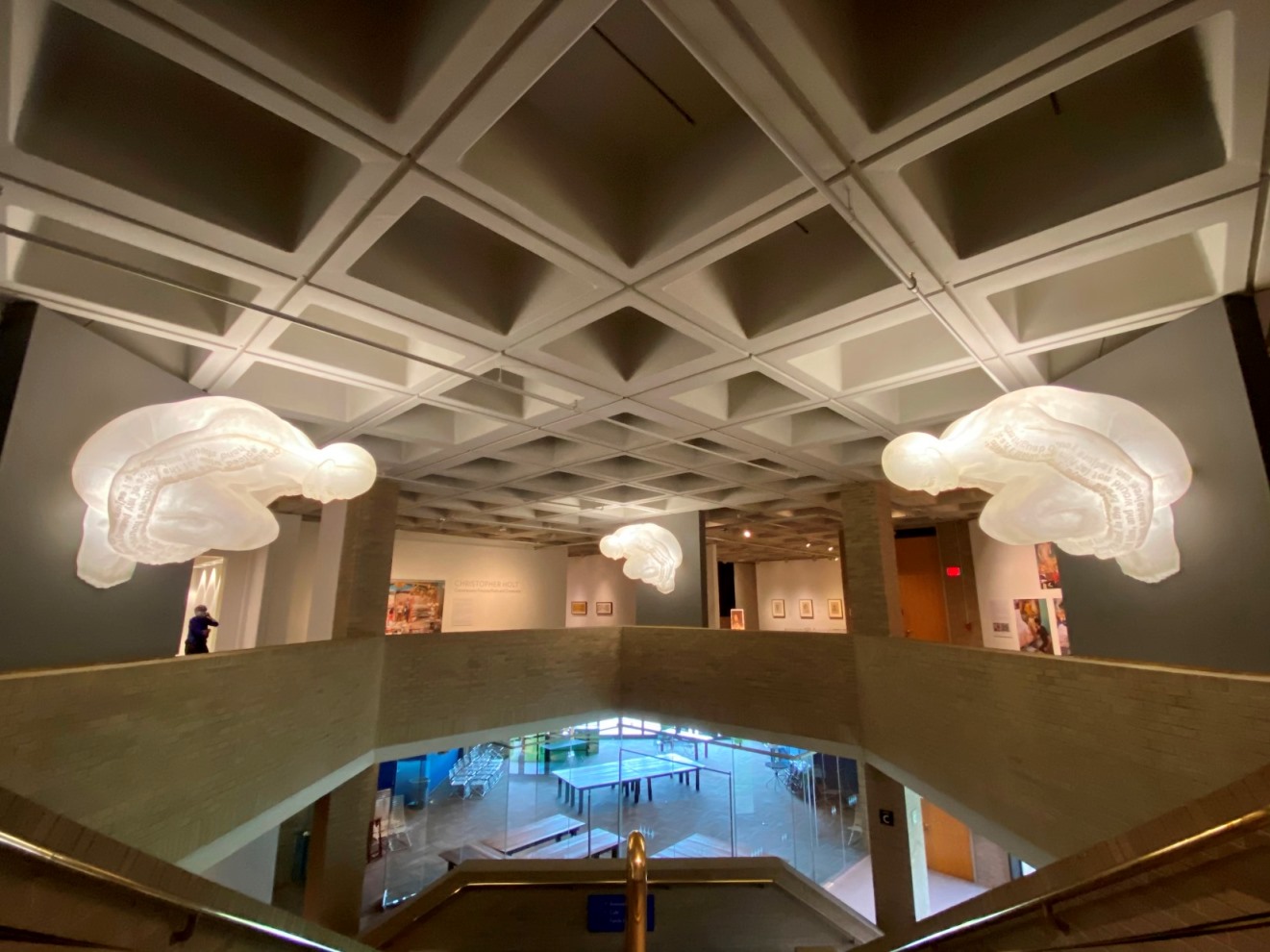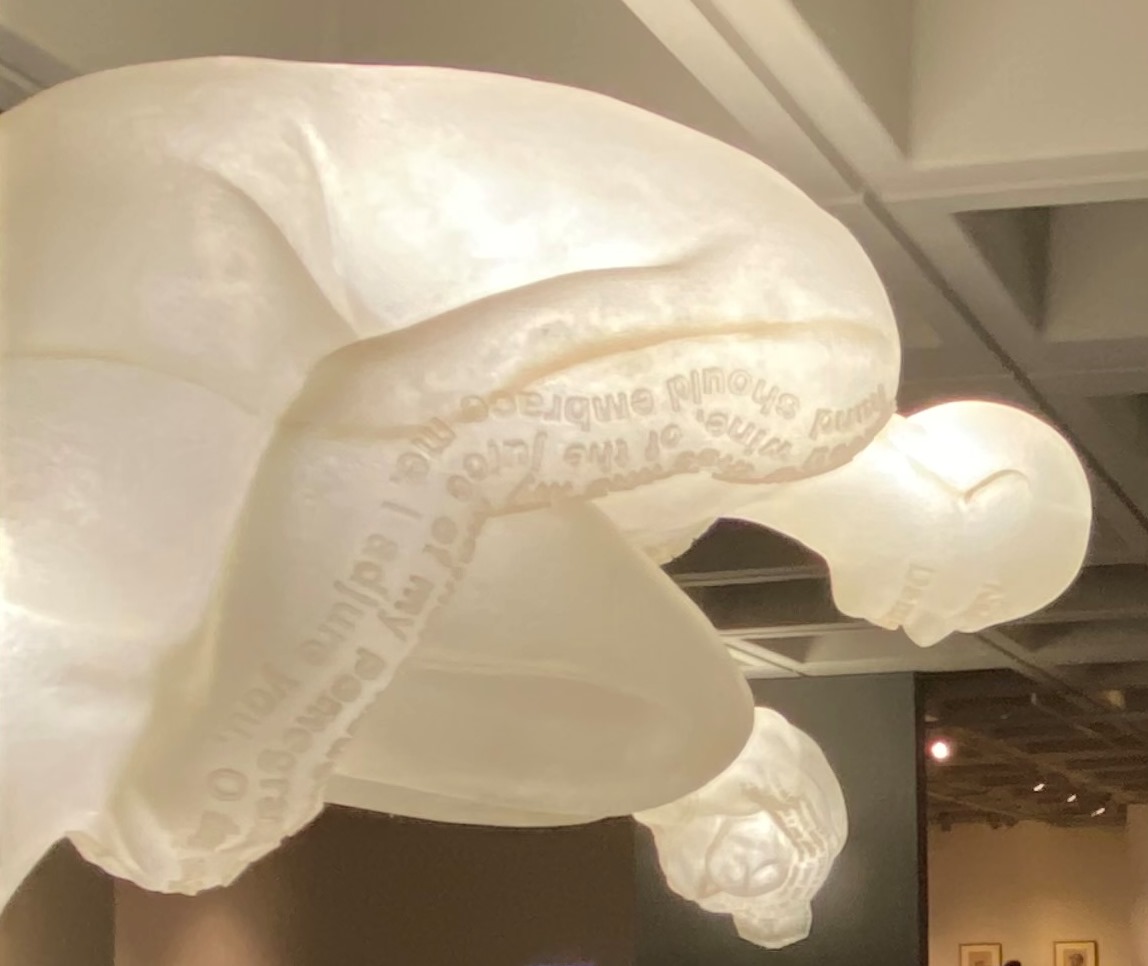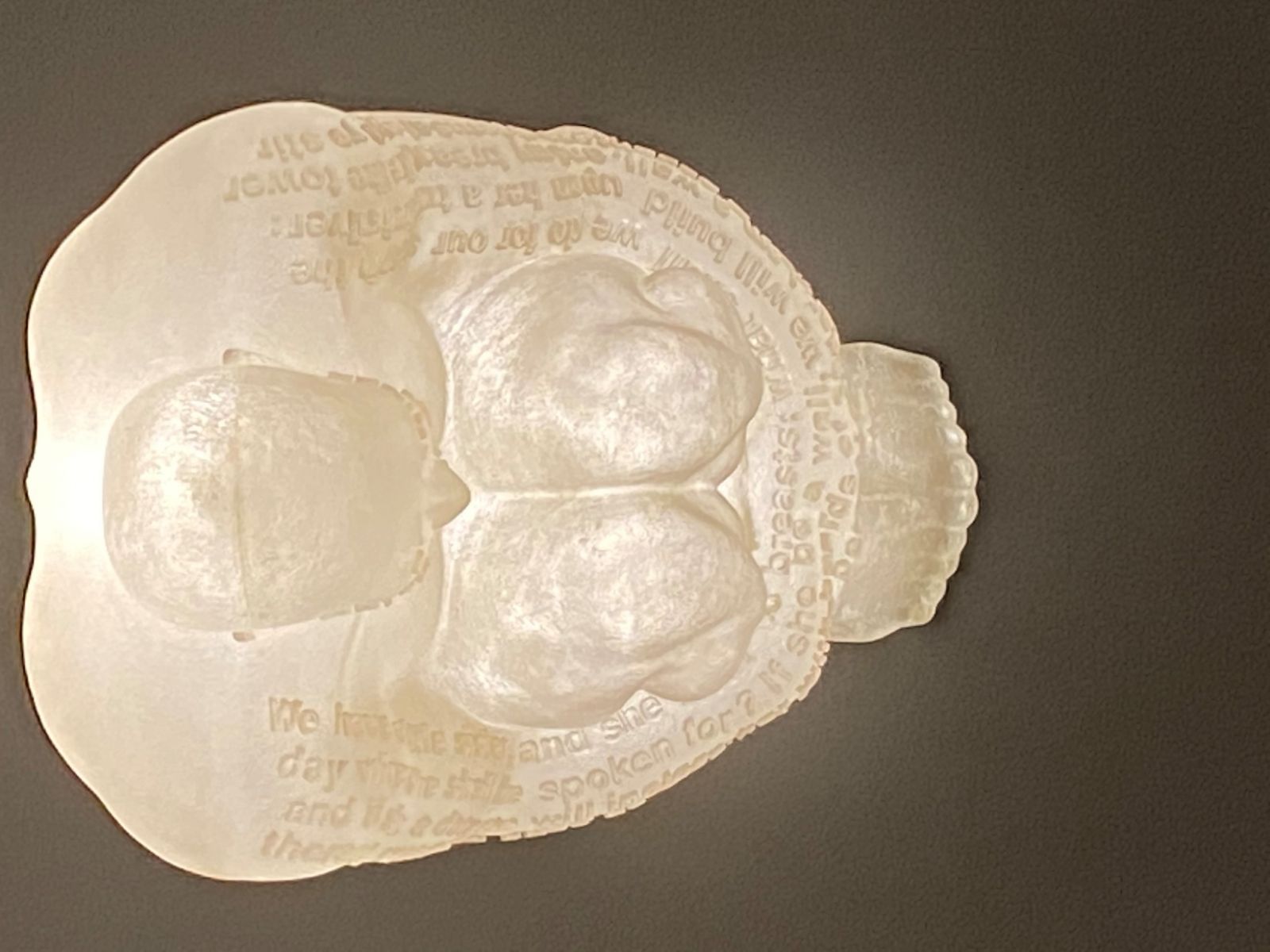Plens, Jaume - VM - Alexandra Davison
Jaume Plensa: Doors of Jerusalem I, II, & III

Passion for the Light
by Alexandra Jean Davison
Behold, the Bridegroom cometh: go ye out
With lighted lamps and garlands round about
To meet Him in a rapture with a shout.
Advent Sunday by Christina Rossetti
Last year at Advent thousands of visitors entered the North Carolina Museum of Art (NCMA) in Raleigh, NC, USA without fear of illness. Now Jaume Plensa’s Doors of Jerusalem I, II & III receive a few restricted and masked visitors.
Plensa (b. 1955) is an internationally known artist from Barcelona, Spain. We see three identical nudes filled with light, the face and arms covered with names and Scripture. Each figure sits at rest horizontally on one of the three walls which form a triangle. The closed eyes and mouth are covered with embossed text of the names of the eight gates of the ancient city walls of Jerusalem: New, Herod, Damascus, Golden (two doors: Gate of Repentance and Gate of Mercy), Lions, Jaffa, Zion, and Dung. Tattoo-like passages from the Song of Songs emerge from the heart upon the arms.

There are various interpretations about the spiritual meaning in the romantic poetry of Song of Songs from the Bible. Songs is filled with declarations and questions about love and longing, passion and purity, waiting and fulfillment. The main character is a Shulamite woman (the Bride) who speaks with her friends and her Beloved, the Bridegroom.
In the work’s description Plensa states, “In the Song of Songs, a woman tirelessly crosses this wall looking for her love. She dreams and imagines love is like a door in the wall. Perhaps this wall is another metaphor of the body and the doors another metaphor of the soul. Dream and desire are fused in the prison of the heart.”
For Plensa sculpture has a profound ability to convey spirituality in the material, the connection between the body, mind, and soul. He believes that time, text, and the body are hosts for memory and imagination. The figure’s arms – filled with Scripture – are wrapped around the drawn knees, his whole being intent on the light within as the gates of Jerusalem and the words of the Bride’s desire surround him.

Plensa created Doors for the NCMA in 2006 but he has engaged themes with doors, light and text and time in several works. He said, “When I was looking for information on doors, I came across a dictionary definition that said: “Door: the most important part of a house.” I don’t think that this is based on architecture, but because there’s a decision connected to it: you have to decide whether and when to cross the threshold.”
Plensa’s Doors hold this decision, this moment of receiving and revealing light, life, and love in stillness much like Advent. And Christians zealously anticipate the Bridegroom’s return as the Bride of Christ, who will announce the fulfillment of God’s pleasure and promises for the New Jerusalem in the fullness of time (Revelation 22:20).
Like Plensa’s sculptures that indicate life in stillness, Advent conveys an energized tension of waiting and preparation for the Bridegroom’s arrival in the “here and not yet”.
Many will lament this year as a time of loss of health, work, and time. But the Christian believes that any hope in this world, even life, is temporary and ultimately a false hope (Matthew 7:24-27). When we fix our gaze on the unshakable truths of the Bridegroom, fear, darkness, and death lose their power. Like Plensa’s Doors I, II, & III we become the Shulamite bride by remembering the past, embracing this threshold moment, and eagerly waiting and watching for Christ as we reveal God’s Light.
*******
Jaume Plensa: Doors of Jerusalem I, II, & III, 2006, resin, stainless steel, light, dimensions (each) 120 x 158 x 205 cm.
To view the work online, see NCMA Learn: https://learn.ncartmuseum.org/artwork/doors-of-jerusalem-i-ii-iii/
Jaume Plensa is a Spanish artist and sculptor born in 1955 in Barcelona, Catalonia, where he later studied art in the "Llotja" School and in the Escola Superior de Belles Arts de Sant Jordi. His works can be seen in Spain, France, Italy, Sweden, Great Britain, USA, Canada and elsewhere around the world.
For the interview with Jaume Plensa, see Transforming Energy, a Conversation with Jaume Plensa by Michael Stoeber: https://jaumeplensa.com/gestorPlensa/Moduls/bibliography/press/pdf/39/2006%20Sculpture%20Magazine.pdf
Alexandra Jean Davison is the director for Culture Care RDU, a ministry department of Artists in Christian Testimony International (A.C.T. Intl). Her Culture Care blog and work equips churches to show Christ in hospitable explorations in faith, imagination, and artistry. She received an M.Div in Apologetics at Southeastern Baptist Theological Seminary in North Carolina. She then went on to receive an M.Litt in Theology, Imagination and the Arts at the University of Saint Andrews in Scotland. She interned with the artist Makoto Fujimura as part of the Fujimura Institute based in New York City. She lives in Houston, Texas, USA. For more information, see www.culturecarerdu.com.
ArtWay Visual Meditation 29 November 2020


